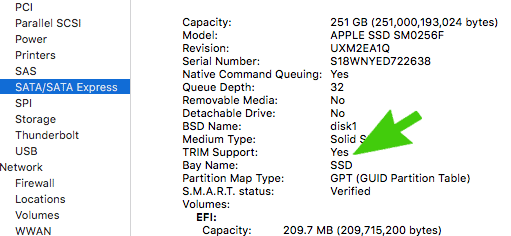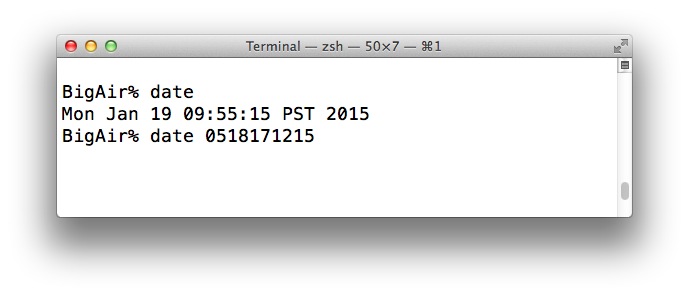- El Capitan Cannot Be Verified Online
- El Capitan Cannot Be Verified Without
- Cannot Be Verified El Capitan
- As explained here, OS X 10.11 'El Capitan' fails to install because it is too old (the technical reason being that the signing certificate is no longer valid). But you can trick the OS X installer into thinking that it is 2017 and it will happily run without any errors.
- EL CAPITAN ERROR SOLVED: You should change the clock to 5 years backThis copy of the Install OS X El Capitan application can't be verified. It may have been.
- I am trying to upgrade an older iMac (2008) from OS 10.6.8 to El Capitan for a disabled client who really needs to use a Mac instead of a PC!
- EveryMac says it can handle El Capitan if I upgrade RAM. It has 4GB now.
- I have an Installer file from my own Mac (always keep them when I upgrade). I made a bootable flash installer that mounts and seems to have the proper files, but it won't show up on either Mac on restart holding option key; nor in the Startup Disk list. So, I figured writing to the flash drive must have failed.
- I partitioned an external hard drive and redid this:
'sudo /Applications/Install OS X El Capitan.app/Contents/Resources/createinstallmedia --volume /Volumes/MyVolume --applicationpath /Applications/Install OS X El Capitan.app'
- It seems to work (again) in Finder AND it shows up as a boot option on restart (holding option key), but when I select Install OS X I get an error that the installer cannot be verified. I can't get it to work.
- So, I figured my installer must have gone bad, even though I successfully upgraded my own Mac with it, and have since upgraded mine to Sierra.
- Using the App Store I can get to El Capitan, but it will not allow me to download it on my Mac because the system is too new, and I don't want to download it to the old Mac because I want to use an external drive to do a clean install; not an upgrade on the old one.
- Any advice?
IMAC (RETINA 5K, 27-INCH, LATE 2015), macOS Sierra (10.12.3)

Is not working with El Capitan yet?Thank you,William. Community content may not be verified or up-to-date. All Replies (34) 10/12/15.
Posted on Feb 28, 2017 9:53 PM
Confirm that the USB drive will lose it’s data and enter the Admin password when asked; Disk Utility will now create a bootable OS X Mountain Lion installer drive out of USB drive using the disk image, this can take a little while depending on how fast the drive and Mac are but 20-30 minutes isn’t unusual. Better support under Linux through PlayOnLinux software allowing easy install/uninstall. Improved OS X User Interface and compatibiltiy with OS X 10.11 El Capitan. Updated license usage. BugFix: - Improved Memory usage and minor optimization and improvements. Fixed various minor bugs - Fixed minor bug when saving compressed TIFF files.
These advanced steps are primarily for system administrators and others who are familiar with the command line. You don't need a bootable installer to upgrade macOS or reinstall macOS, but it can be useful when you want to install on multiple computers without downloading the installer each time.
El Capitan Usb Installer Download
What you need to create a bootable installer
- A USB flash drive or other secondary volume formatted as Mac OS Extended, with at least 14GB of available storage
- A downloaded installer for macOS Big Sur, Catalina, Mojave, High Sierra, or El Capitan
Download macOS
- Download: macOS Big Sur, macOS Catalina, macOS Mojave, or macOS High Sierra
These download to your Applications folder as an app named Install macOS [version name]. If the installer opens after downloading, quit it without continuing installation. To get the correct installer, download from a Mac that is using macOS Sierra 10.12.5 or later, or El Capitan 10.11.6. Enterprise administrators, please download from Apple, not a locally hosted software-update server. - Download: OS X El Capitan
This downloads as a disk image named InstallMacOSX.dmg. On a Mac that is compatible with El Capitan, open the disk image and run the installer within, named InstallMacOSX.pkg. It installs an app named Install OS X El Capitan into your Applications folder. You will create the bootable installer from this app, not from the disk image or .pkg installer.
Use the 'createinstallmedia' command in Terminal
- Connect the USB flash drive or other volume that you're using for the bootable installer.
- Open Terminal, which is in the Utilities folder of your Applications folder.
- Type or paste one of the following commands in Terminal. These assume that the installer is in your Applications folder, and MyVolume is the name of the USB flash drive or other volume you're using. If it has a different name, replace
MyVolumein these commands with the name of your volume.
Big Sur:*
Catalina:*
Mojave:*
High Sierra:*
El Capitan:
* If your Mac is using macOS Sierra or earlier, include the --applicationpath argument and installer path, similar to the way this is done in the command for El Capitan.
After typing the command:

- Press Return to enter the command.
- When prompted, type your administrator password and press Return again. Terminal doesn't show any characters as you type your password.
- When prompted, type
Yto confirm that you want to erase the volume, then press Return. Terminal shows the progress as the volume is erased. - After the volume is erased, you may see an alert that Terminal would like to access files on a removable volume. Click OK to allow the copy to proceed.
- When Terminal says that it's done, the volume will have the same name as the installer you downloaded, such as Install macOS Big Sur. You can now quit Terminal and eject the volume.
Make El Capitan Usb Installer
Use the bootable installer
Determine whether you're using a Mac with Apple silicon, then follow the appropriate steps:
Apple silicon
- Plug the bootable installer into a Mac that is connected to the internet and compatible with the version of macOS you're installing.
- Turn on your Mac and continue to hold the power button until you see the startup options window, which shows your bootable volumes and a gear icon labled Options.
- Select the volume containing the bootable installer, then click Continue.
- When the macOS installer opens, follow the onscreen instructions.
Intel processor
El Capitan Cannot Be Verified Online
- Plug the bootable installer into a Mac that is connected to the internet and compatible with the version of macOS you're installing.
- Press and hold the Option (Alt) ⌥ key immediately after turning on or restarting your Mac.
- Release the Option key when you see a dark screen showing your bootable volumes.
- Select the volume containing the bootable installer. Then click the up arrow or press Return.
If you can't start up from the bootable installer, make sure that the External Boot setting in Startup Security Utility is set to allow booting from external media. - Choose your language, if prompted.
- Select Install macOS (or Install OS X) from the Utilities window, then click Continue and follow the onscreen instructions.

Learn more
El Capitan Usb Install Cannot Be Verified
For more information about the createinstallmedia command and the arguments that you can use with it, make sure that the macOS installer is in your Applications folder, then enter the appropriate path in Terminal:
El Capitan Cannot Be Verified Without
- Big Sur: /Applications/Install macOS Big Sur.app/Contents/Resources/createinstallmedia
- Catalina: /Applications/Install macOS Catalina.app/Contents/Resources/createinstallmedia
- Mojave: /Applications/Install macOS Mojave.app/Contents/Resources/createinstallmedia
- High Sierra: /Applications/Install macOS High Sierra.app/Contents/Resources/createinstallmedia
- El Capitan: /Applications/Install OS X El Capitan.app/Contents/Resources/createinstallmedia
El Capitan Usb Installer Torrent
Cannot Be Verified El Capitan
A bootable installer doesn't download macOS from the internet, but it does require an internet connection to get firmware and other information specific to the Mac model.